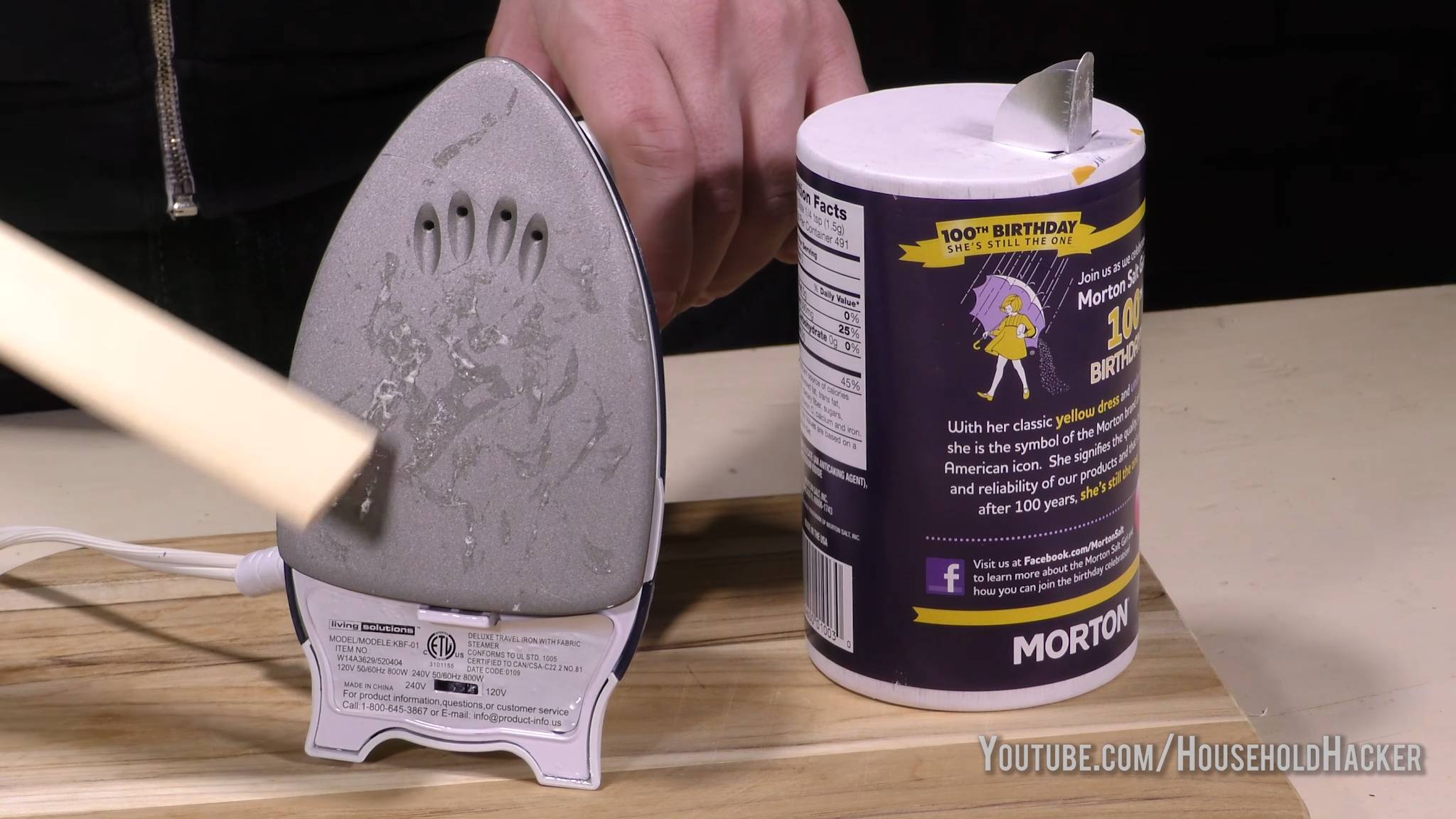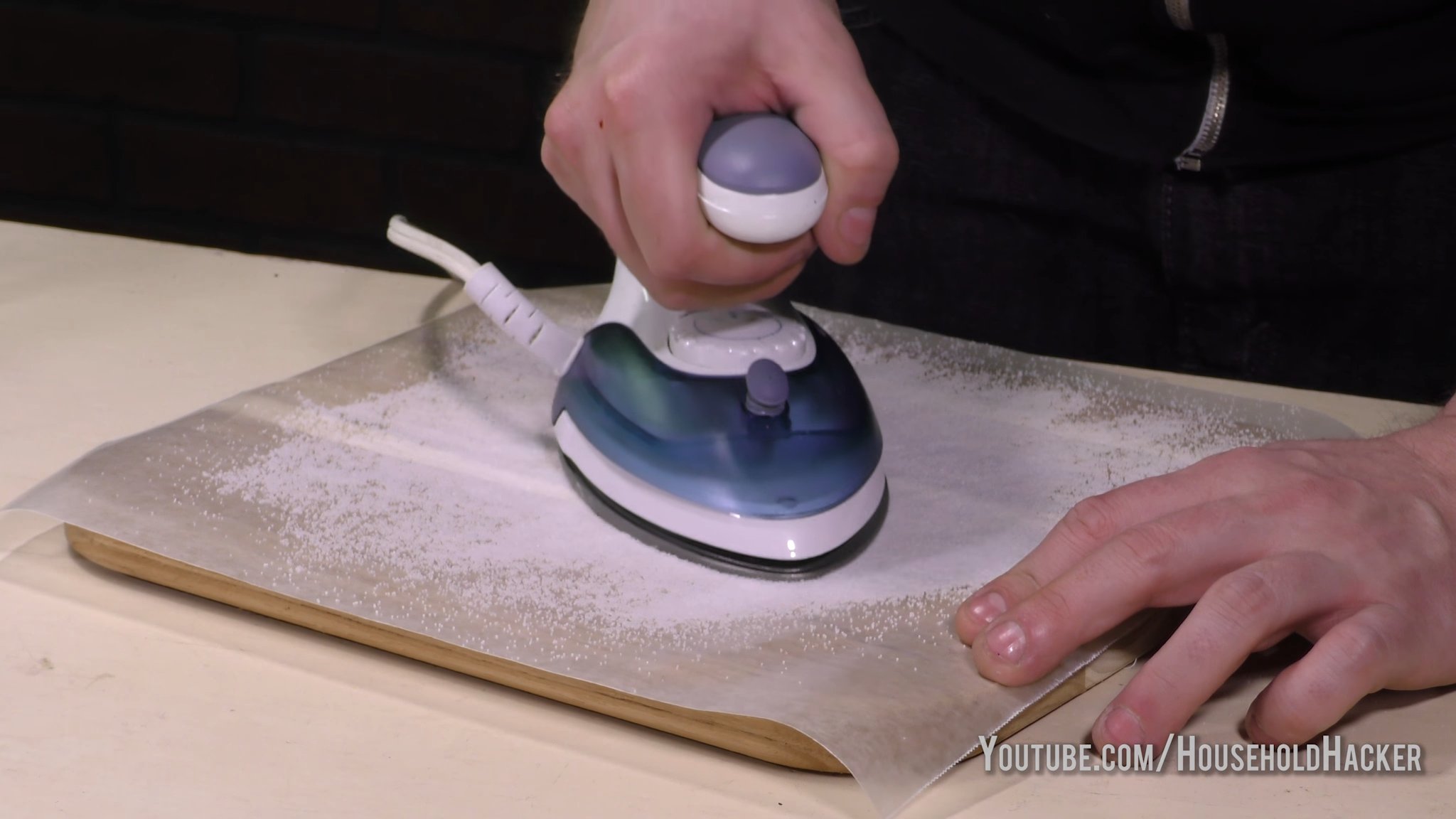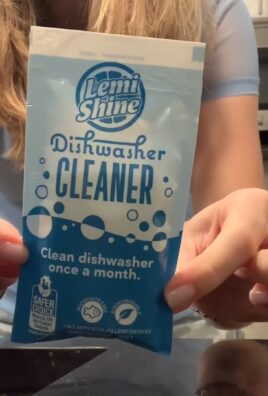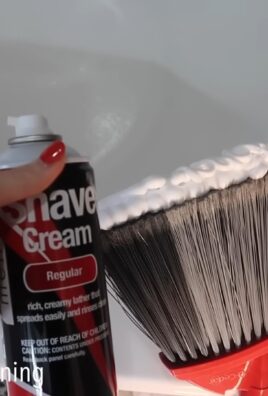Salt Uses DIY: Unlock the surprising secrets hidden in your pantry! Did you know that humble table salt is more than just a seasoning? For centuries, salt has been a vital part of human life, not only flavoring our food but also playing a role in preservation and even ancient rituals. Think about it – from Roman soldiers being paid in salt (the origin of the word “salary”) to its use in traditional food preservation techniques, salt has a rich and fascinating history.
But let’s bring it back to the present, and more importantly, to your garden! I’m excited to share some incredible salt uses DIY tricks that can transform your gardening experience. Are you tired of battling weeds, struggling with pests, or watching your plants wither despite your best efforts? You’re not alone! Many gardeners face these challenges, and that’s where salt comes in.
This article is packed with simple, effective, and budget-friendly DIY solutions using salt that will help you tackle common gardening problems. From naturally controlling weeds to boosting plant health, these hacks are designed to make your life easier and your garden thrive. So, grab your salt shaker, and let’s get started on this journey to a healthier, happier garden!

DIY Salt Hacks: Unleash the Power of Sodium Chloride!
Hey there, fellow DIY enthusiasts! Get ready to be amazed by the versatility of something you probably already have in your kitchen: salt! Yes, that humble little ingredient is a powerhouse of potential when it comes to DIY projects around the house. I’m going to share some of my favorite salt hacks that are not only effective but also incredibly budget-friendly. Let’s dive in!
Cleaning and Deodorizing with Salt
Salt’s abrasive texture and natural disinfecting properties make it a fantastic cleaning agent. Forget harsh chemicals; let’s harness the power of salt!
Cleaning a Cast Iron Skillet
Cast iron skillets are amazing, but cleaning them can be a pain. Here’s how salt can help:
1. Scrape off Excess Food: After cooking, use a spatula to remove any large pieces of food from the skillet.
2. Add Coarse Salt: Pour a generous amount of coarse salt (kosher or sea salt works best) into the skillet. I usually use about half a cup, but adjust based on the size of your skillet and how much scrubbing you need to do.
3. Scrub Vigorously: Using a clean, dry cloth or a stiff brush, scrub the skillet with the salt. The salt acts as a gentle abrasive, lifting away stuck-on food particles without damaging the seasoning. I like to use circular motions, applying firm pressure.
4. Rinse and Dry: Rinse the skillet with hot water. Don’t use soap, as it can strip away the seasoning. Immediately dry the skillet thoroughly with a clean towel.
5. Season (Optional): To maintain the seasoning, place the skillet on the stovetop over low heat until it’s completely dry. Then, add a teaspoon of oil (vegetable or canola oil works well) and rub it all over the inside of the skillet with a paper towel. Heat for a few more minutes until the oil starts to smoke slightly. Let it cool completely before storing.
Deodorizing Cutting Boards
Cutting boards, especially wooden ones, can absorb odors over time. Salt to the rescue!
1. Sprinkle Salt: Generously sprinkle coarse salt over the entire surface of the cutting board.
2. Rub with Lemon: Cut a lemon in half and use one half to rub the salt into the cutting board. The lemon juice helps to disinfect and further deodorize. I like to really work the lemon into the grooves and scratches.
3. Let it Sit: Allow the salt and lemon mixture to sit on the cutting board for about 15-20 minutes. This gives the salt time to absorb the odors.
4. Rinse and Dry: Rinse the cutting board thoroughly with warm water and dry it completely.
Cleaning a Stained Mug
Coffee and tea stains can make your favorite mug look less than appealing. Here’s a simple salt scrub:
1. Dampen the Mug: Lightly dampen the inside of the stained mug with water.
2. Add Salt: Sprinkle a tablespoon or two of salt into the mug.
3. Scrub: Use a damp sponge or cloth to scrub the inside of the mug with the salt. The salt will act as a gentle abrasive, removing the stains. I find that focusing on the areas with the most staining works best.
4. Rinse and Dry: Rinse the mug thoroughly with warm water and dry it completely.
Cleaning Your Iron
A dirty iron can leave marks on your clothes. Salt can help clean the soleplate:
1. Prepare the Surface: Lay a clean, cotton cloth or ironing board cover on a flat surface.
2. Sprinkle Salt: Generously sprinkle a layer of salt onto the cloth. I use about a quarter cup, making sure it’s evenly distributed.
3. Heat the Iron: Turn on your iron to the highest dry setting (no steam).
4. Iron the Salt: Run the hot iron over the salt-covered cloth for a few minutes, using gentle pressure. The salt will help to loosen and remove any residue from the soleplate. I like to move the iron back and forth and in circular motions.
5. Wipe Clean: Unplug the iron and let it cool completely. Once cool, wipe the soleplate with a clean, damp cloth to remove any remaining salt residue.
Beauty and Personal Care with Salt
Believe it or not, salt can also be incorporated into your beauty routine!
Salt Scrub for Exfoliation
A salt scrub is a fantastic way to exfoliate your skin, removing dead skin cells and leaving it feeling smooth and refreshed.
1. Combine Ingredients: In a bowl, combine 1/2 cup of fine sea salt with 1/4 cup of carrier oil (such as olive oil, coconut oil, or almond oil). I personally love using coconut oil because of its moisturizing properties and lovely scent.
2. Add Essential Oils (Optional): If desired, add a few drops of your favorite essential oil for fragrance and added benefits. Lavender, peppermint, or eucalyptus are great choices. I usually add about 5-10 drops.
3. Mix Well: Mix all the ingredients together until well combined. The mixture should have a slightly grainy texture.
4. Apply to Skin: In the shower or bath, apply the salt scrub to damp skin. Gently massage it in circular motions, focusing on areas that are dry or rough, such as elbows, knees, and feet. Be careful not to scrub too hard, especially on sensitive skin.
5. Rinse Thoroughly: Rinse your skin thoroughly with warm water.
6. Moisturize: After rinsing, pat your skin dry and apply a moisturizer to lock in hydration.
Salt Water Gargle for Sore Throat
A salt water gargle is a classic remedy for a sore throat.
1. Mix Salt and Water: Dissolve 1/2 teaspoon of salt in 8 ounces of warm water. Make sure the salt is completely dissolved.
2. Gargle: Gargle with the salt water for about 30 seconds, being careful not to swallow it.
3. Repeat: Repeat the gargling process several times a day, especially when your throat feels scratchy or sore.
Foot Soak for Tired Feet
A salt foot soak can help to soothe tired, achy feet.
1. Fill Basin: Fill a basin or tub with warm water.
2. Add Salt: Add 1/2 cup of Epsom salt (magnesium sulfate) and 1/4 cup of sea salt to the water. Epsom salt helps to reduce inflammation and muscle soreness, while sea salt provides additional minerals.
3. Soak Feet: Soak your feet in the salt water for 15-20 minutes.
4. Dry and Moisturize: After soaking, dry your feet thoroughly and apply a moisturizer.
Household Hacks with Salt
Beyond cleaning and beauty, salt can be used for a variety of other household tasks.
Absorbing Spills
Salt is excellent at absorbing spills, especially greasy ones.
1. Cover the Spill: Immediately cover the spill with a generous amount of salt.
2. Let it Sit: Allow the salt to sit on the spill for at least 15-20 minutes, or even longer for larger spills. The salt will absorb the liquid, making it easier to clean up.
3. Sweep or Vacuum: Sweep or vacuum up the salt.
4. Clean the Surface: Clean the surface with a damp cloth or sponge to remove any remaining residue.
Testing Egg Freshness
Wondering if your eggs are still good? Salt can help!
1. Fill a Bowl: Fill a bowl with water.
2. Add Salt: Add 2 tablespoons of salt to the water and stir to dissolve.
3. Place the Egg: Gently place the egg in the salt water.
4. Observe: If the egg sinks and lies flat on the bottom, it’s fresh. If it sinks but stands on one end, it’s still good but should be used soon. If it floats, it’s no longer fresh and should be discarded.
Keeping Ants Away
Salt can act as a natural ant repellent.
1. Identify Ant Trails: Observe where the ants are entering your home.
2. Sprinkle Salt: Sprinkle a line of salt along the ant trails or around the entry points.
3. Repeat as Needed: Repeat the process as needed to keep the ants away.
Preventing Fruit from Browning
Salt can help prevent cut fruit from browning.
1. Prepare Salt Water: Dissolve 1/2 teaspoon of salt in 1 cup of water.
2. Soak Fruit: Soak the cut fruit in the salt water for a few minutes.
3. Rinse and Enjoy: Rinse the fruit with fresh water and enjoy! The

Conclusion
So, there you have it! This simple yet incredibly effective DIY trick using something as common as salt can truly revolutionize your daily life. We’ve explored how harnessing the power of salt uses can extend far beyond the kitchen, offering practical solutions for cleaning, beauty, and even home improvement.
Why is this a must-try? Because it’s cost-effective, readily available, and environmentally friendly. Forget expensive, chemical-laden products that promise the world but often fall short. Salt is a natural powerhouse, capable of tackling tough stains, exfoliating skin, and even boosting the longevity of your cut flowers. It’s a return to basics, a celebration of simplicity, and a testament to the fact that the most effective solutions are often the ones right under our noses.
But don’t stop there! The beauty of this DIY approach lies in its adaptability. Feel free to experiment with different types of salt – coarse sea salt for a more invigorating scrub, Epsom salt for soothing sore muscles, or even flavored salts to add a unique twist to your cleaning solutions. Consider adding essential oils to your salt scrubs for aromatherapy benefits, or mixing salt with vinegar for an extra-powerful cleaning paste. The possibilities are truly endless!
We encourage you to embrace this DIY adventure and discover the myriad ways that salt can simplify and enhance your life. Don’t be afraid to get creative, to tweak the recipes to suit your specific needs, and to share your own unique discoveries with the world.
Most importantly, we want to hear about your experiences! Did you find a particularly effective use for salt that we didn’t mention? Did you create a variation that blew your mind? Share your stories, your tips, and your photos in the comments below. Let’s build a community of salt enthusiasts, sharing our knowledge and inspiring each other to live more sustainably and effectively.
This isn’t just about a DIY trick; it’s about empowering ourselves with the knowledge to create a better, healthier, and more resourceful life. So go ahead, grab that salt shaker, and prepare to be amazed! The power of salt uses is waiting to be unlocked.
Frequently Asked Questions (FAQs)
What kind of salt is best for these DIY tricks?
The type of salt you use depends on the specific application. For cleaning purposes, table salt, sea salt, or kosher salt are generally effective. For beauty treatments like scrubs, finer salts like sea salt or Epsom salt are preferred to avoid irritation. Epsom salt is also excellent for soaking sore muscles. Avoid using iodized salt on delicate surfaces as it can sometimes cause staining. Always test a small, inconspicuous area first, especially when using salt on fabrics or furniture.
Is salt safe to use on all surfaces?
While salt is generally safe, it’s important to exercise caution on certain surfaces. Avoid using salt on delicate or porous materials like marble, granite, or unfinished wood, as it can potentially scratch or damage them. Always test a small, hidden area first to ensure compatibility. For sensitive surfaces, consider diluting the salt solution or using a gentler abrasive like baking soda.
Can I use salt to clean my electronics?
No, you should never use salt or any liquid directly on your electronics. Moisture and salt can cause significant damage to electronic components. For cleaning electronics, use a dry microfiber cloth or specialized electronic cleaning wipes.
How do I store my homemade salt scrubs?
Store your homemade salt scrubs in an airtight container in a cool, dry place. This will help prevent the salt from clumping or absorbing moisture. If you’re using fresh ingredients like herbs or citrus zest, store the scrub in the refrigerator to extend its shelf life. Always check for any signs of spoilage before using.
How often can I use a salt scrub on my skin?
The frequency of salt scrub use depends on your skin type. If you have sensitive skin, limit use to once a week or less. For normal to oily skin, you can use a salt scrub two to three times a week. Always be gentle when exfoliating and avoid scrubbing too hard, as this can irritate the skin. Follow up with a moisturizer to keep your skin hydrated.
Can I use salt to get rid of weeds in my garden?
Yes, salt can be an effective natural weed killer. However, it’s important to use it carefully, as it can also harm desirable plants if it comes into contact with their roots. Dissolve salt in water and pour the solution directly onto the weeds, avoiding surrounding plants. Be aware that using salt as a weed killer can affect the soil’s pH and make it difficult for other plants to grow in that area in the future.
What are the benefits of using salt in a bath?
Adding salt to your bath can provide several benefits, including relieving muscle soreness, reducing inflammation, and promoting relaxation. Epsom salt is particularly well-known for its therapeutic properties, as it contains magnesium, which can be absorbed through the skin. Sea salt can also help to detoxify the body and improve circulation.
Can I use salt to preserve food?
Yes, salt has been used for centuries as a natural food preservative. It works by drawing moisture out of food, which inhibits the growth of bacteria and other microorganisms that cause spoilage. Salt can be used to preserve meats, fish, vegetables, and fruits. However, it’s important to use the correct amount of salt and follow proper preservation techniques to ensure food safety.
Is there a difference between table salt and sea salt?
Yes, there are some differences between table salt and sea salt. Table salt is typically mined from underground deposits and is heavily processed to remove impurities. It often contains additives like iodine and anti-caking agents. Sea salt, on the other hand, is produced by evaporating seawater and is generally less processed. It may contain trace minerals that contribute to its flavor and color.
What are some other creative uses for salt around the house?
Beyond cleaning and beauty, salt can be used to:
* Absorb spills: Sprinkle salt on fresh spills to absorb the liquid and make cleanup easier.
* Deodorize shoes: Place a small amount of salt in a cloth bag and put it inside your shoes to absorb moisture and odors.
* Clean cast iron cookware: Use salt as a gentle abrasive to scrub away food residue from cast iron pans.
* Keep ants away: Create a salt barrier around areas where ants are entering your home.
* Polish copper and silver: Make a paste of salt, vinegar, and flour to polish tarnished copper and silver items.
Remember to always research and test any DIY application of salt before applying it to a large area or using it extensively. The versatility of salt uses is truly remarkable, and with a little experimentation, you can discover even more ways to harness its power.




Leave a Comment